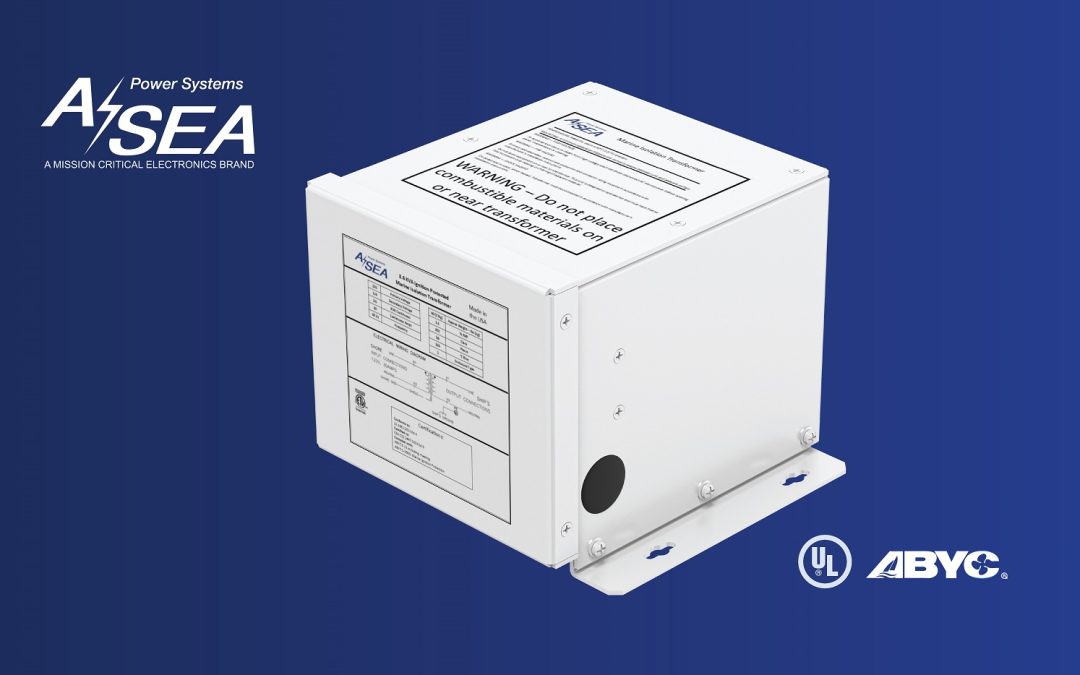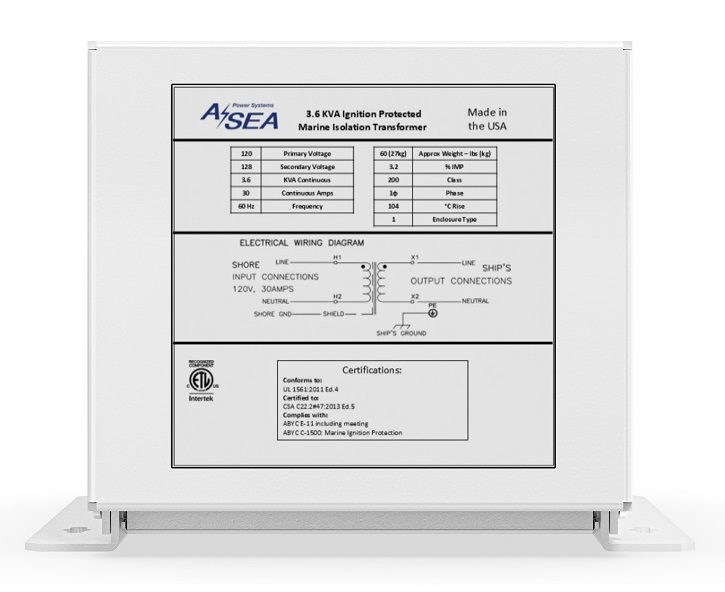When it comes to marine electrical safety, choosing the right isolation transformer is crucial. Boat owners and marine engineers often debate between toroidal and potted transformers, but one key distinction makes the choice clear, only potted transformers meet ABYC standards for marine use. Understanding why this is the case requires looking into construction differences, safety implications, and ABYC requirements that govern marine electrical systems.
Toroidal Transformers
Toroidal transformers are widely used in residential and industrial applications due to their compact size, efficiency, and lightweight design. Built with a circular, doughnut-shaped core wrapped in copper windings, they minimize electromagnetic interference and are known for their quiet operation.
However, marine environments introduce unique challenges that toroidal transformers are not designed to handle. One of the primary concerns is exposure to moisture and salt, which can lead to corrosion and performance degradation over time. Unlike potted transformers, toroidal transformers are typically open-frame and lack proper sealing, making them vulnerable to harsh marine conditions.
A more critical issue is their lack of ignition protection, a safety requirement outlined by ABYC for marine installations. According to ABYC Standard E-11.7.1.3:
“A permanently installed isolation transformer shall be ignition protected if installed in a gasoline-powered boat or in an area requiring ignition-protected devices.”
Since toroidal transformers do not meet this ignition protection requirement and pose risk of fire hazard, they are not ABYC compliant, especially in gasoline-powered vessels or enclosed spaces where fuel vapors may accumulate.
Potted Transformers
Potted transformers, on the other hand, are engineered specifically for marine applications. Unlike toroidal transformers, they are fully enclosed in a resin or epoxy-filled casing, creating a protective barrier against moisture, salt air, and vibration. This encapsulation process enhances durability, thermal stability, and mechanical strength, making potted transformers a long-lasting solution in demanding marine conditions.
A key advantage of potted transformers is their compliance with ABYC and UL 1500 ignition protection standards. Because they are sealed and self-contained, they can be installed in enclosed engine rooms or areas where fuel vapors may be present, ensuring safe and reliable operation. Their rugged construction makes them the preferred choice for boat owners who require compliance, reliability, and long-term performance from their isolation transformer.
The Role of Secondary Shield Grounding in Isolation Transformers
A well-designed isolation transformer does more than just separate shore power from a boat’s electrical system. One key feature that enhances safety and compliance is secondary shield grounding.
A secondary shield ground is a conductive barrier placed between the primary (shore power side) and secondary (boat side) windings of an isolation transformer. This shield is connected to the dock side ground, serving as a protective layer that prevents stray currents from transferring between the two windings.
In a marine environment, where moisture, stray currents, and electromagnetic interference (EMI) are common, secondary shield grounding plays an important role by:
- Reducing Electromagnetic Interference (EMI): By acting as a buffer between the windings, the shield absorbs and redirects electrical noise, protecting sensitive onboard electronics from voltage spikes and interference.
- Minimizing Stray Currents: Any leakage current or transient voltage that occurs between the primary and secondary windings is safely redirected to ground, reducing the risk of galvanic corrosion.
- Enhancing Safety Compliance: ABYC standards emphasize the importance of proper grounding in marine electrical systems. A secondary shield ground helps ensure the isolation transformer meets regulatory requirements and provides greater protection against electrical faults.
Key Considerations When Choosing a Marine Transformer
Many boat owners prioritize cost when selecting an isolation transformer, but it is important to consider long-term durability, safety, and compliance. While toroidal transformers may have a lower upfront cost, their lack of marine-grade sealing, secondary shield grounding, and ignition protection may lead to higher maintenance expenses and regulatory issues over time. Potted transformers, though more expensive initially, provide better longevity and reliability, reducing the need for frequent replacements or repairs.
|
Feature |
Toroidal Transformer |
Potted Transformer |
|
ABYC Compliant |
❌ No |
✅ Yes |
|
Ignition Protected |
❌ No |
✅ Yes |
|
Sealed Against Moisture |
❌ No |
✅ Yes |
|
Secondary Shield Grounding |
❌ No |
✅ Yes |
|
Durability in Marine Use |
❌ Low |
✅ High |
|
Heat Dissipation |
✅ Good |
✅ Excellent |
|
Cost |
💲 Lower |
💲💲 Higher |
Comparison Table: Toroidal vs. Potted Transformers
ASEA’s Isolation Transformer 3.6kVA | 30A
For boat owners looking for a marine-compliant, ignition-protected, and durable isolation transformer, ASEA’s new Isolation Transformer 3.6kVA | 30A is the safest solution designed as per ABYC standards. Unlike toroidal transformers, they are fully potted and sealed, ensuring maximum safety, compliance, and longevity in marine electrical systems.
Selecting a robust isolation transformer, more than meeting regulatory standards, is about safeguarding yourself and your investment while contributing to a safer marine environment. By mitigating stray currents, reducing electromagnetic interference, and ensuring ABYC compliance, a well-designed potted isolation transformer provides long-term protection for your vessel.
For expert guidance on selecting the right marine isolation transformer, visit ASEA’s website and enquire with our technical specialists today.


